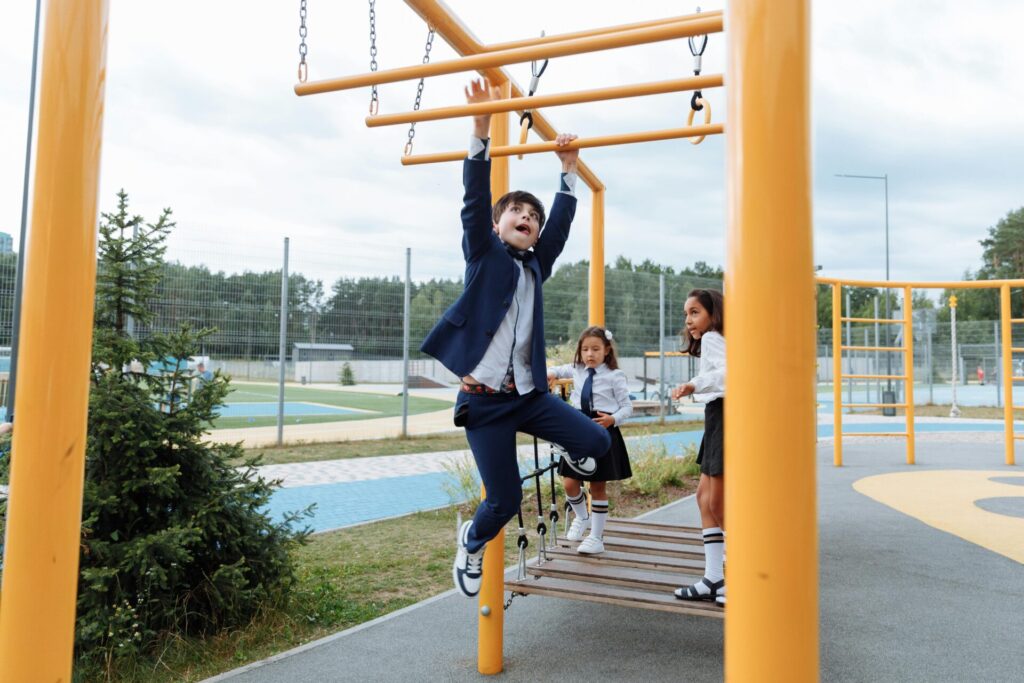Introduction
You stand in your living room, staring at the ottoman your little explorer has decided to scale. It seems like just yesterday they were toddling on unsteady feet, and now they’re attempting their first Everest. This dichotomy of want to keep them safe and needing to encourage their spirit brings a mix of emotions. If you’re a parent of a 2 to 5-year-old, you’re not alone in these feelings. Children at this age are like tiny adventurers, yearning to discover the world around them through every possible avenue, including those labeled ‘Do Not Enter.’ But as they push boundaries and assert their independence, it’s our duty to support them in their growth, ensuring their safety while nurturing their spirit.
Understanding Early Childhood Development
The Need for Exploration
At the core of childhood development lies an innate curiosity — a desire to learn about the world in the most hands-on way possible. From crawling to climbing, these activities are how they refine their senses, motor skills, and understanding of their own physicality. The climb onto that ottoman or the exploration of a new corner in the park is not just play; it’s a critical aspect of their mental and physical development.
Sense of Adventure Fuels Cognitive Leaps
Stepping out into the unknown is not just thrilling; it’s also academically beneficial. Research suggests that taking calculated risks and solving problems encountered during playtime can lead to significant cognitive growth. Activities that stimulate curiosity and push the limits of a child’s comfort zone offer them the chance to learn restraint, decision-making, and even basic physics.
Safety Measures at Home and Outdoors
The Balancing Act of Boundaries
Setting boundaries should be like laying a flexible foundation. They’re there to protect but should always allow for growth. It’s about finding the right balance between safety and freedom. For instance, the living room is not “off limits,” but there are places, high surfaces, for example, that warrant a grown-up’s hand.
The Secure Playground
When outside the home, places that facilitate safe exploration, like playgrounds with age-appropriate equipment, are the best way to maintain control while fostering growth. Being close by allows your child the comfort of knowing you’re there if they need you without disrupting their attempts at self-discovery.
The Role of Play in Learning
Play as the Foundation of the Learning Pyramid
Incorporating educational play sessions into your child’s day can have monumental benefits. Simply put, play is how young children learn best. The ‘work’ of a child is to explore and figure out the world through their actions and interactions, and play is the most natural setting for this to occur.
From Social Skills to Independent Thinking
In play, children learn social rules by pretending to be grown-ups, negotiating roles, and resolving conflicts. They also exercise their imaginations, becoming better problem-solvers and more independent thinkers. This early development from play is crucial for success in school and beyond.
Encouraging Healthy Risk-Taking
Assessing Risks and Benefits
Not all risks are created equal. While some activities may terrify a cautious parent, they could be exactly what your child needs to take the next step in their development. It’s important to weigh the potential for harm against the benefits of the activity. Is there a soft landing if they fall? Will they gain knowledge that will keep them safer in the future?
Resistance Makes Them Resilient
Children who are allowed to take risks, within reason, become more resilient as they learn to control their environment. Encountering and overcoming adversity in small doses builds confidence and the ability to assess and handle risk as they grow older.
Nurturing a Love for the Outdoors
Nature’s Classroom
The great outdoors is nature’s classroom, and there are no better teachers of exploration, curiosity, and adventure. Encouraging your child to engage with the natural world can foster environmental awareness, physical health, and an appreciation for the unexpected.
Outdoor Activities for the Adventurous Tot
Ideas such as building a fort with sticks, going on a bug hunt, or simply hiking an easy trail can provide endless opportunities for learning. These activities also promote the development of fine and gross motor skills, problem-solving, and sensory integration as they touch, smell, and hear the different aspects of nature.
Conclusion
Supporting your adventurous child is a complex but incredibly rewarding experience. By understanding the role of exploration in their development, implementing safety measures that nurture rather than hinder, and actively encouraging activities that foster growth, you’re laying the groundwork for a confident and capable individual. Your role is to be both a guardian and a guide, helping to channel their daring into a positive force that propels them forward, safely into life’s grand adventure. Now, as your little one clambers down from the ottoman, you smile — they’ve learned about climbing and are ready for the next challenge, whatever it may be.

